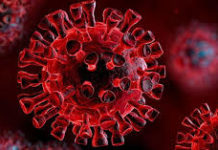Web Desk
The hydel power stations of Pakistan Water and Power Development Authority (WAPDA) cumulatively generated 37.147 billion units of low-cost and environment-friendly electricity during fiscal year 2020-21
The hydel generation by WAPDA is almost equal to that of fiscal year 2019-20 and 3.08 billion units more if compared with the average annual hydel generation during the last 10 years.
According to data of WAPDA hydel power generation in 2020-21, Tarbela Hydel Power Station generated 12.61 billion units, Tarbela 4th Extension 3.42 billion units, Ghazi Barotha 6.89 billion units, Mangla 5.40 billion units, and Neelum-Jhelum Hydel Power Station generated 4.79 billion units. While, rest of the generation i.e. 4.03 billion units – was contributed by other hydel power stations of WAPDA.
Hydel generation is the cheapest electricity, produced in the South Asian country. That is why, it plays a pivotal role for development in economic and social sectors by stabilizing the overall power tariff for the consumers. The impact of hydel electricity on the national economy can be gauged from the fact that generation cost of hydel electricity by WAPDA stand at merely Rs.2.82 per unit, while generation cost from thermal sources remains Rs.13.14 per unit on the average during fiscal year 2020-21.
At present, WAPDA owns and operates 22 hydel power stations, including Neelum Jhelum with cumulative installed generation capacity of 9406 Mega Watt (MW). It is pertinent to mention that WAPDA is vigorously implementing a least-cost energy generation plan to enhance share of hydel electricity in the National Grid. A number of mega projects are being constructed in hydropower sector scheduled to be completed from 2023 to 2028-29. WAPDA projects will double the installed hydel power generation capacity from 9406 MW to 20591 MW. Likewise, WAPDA’s contribution of green and clean hydel electricity to the National Gird will also increase from the existing 37 billion units to more than 81 billion units per annum.















